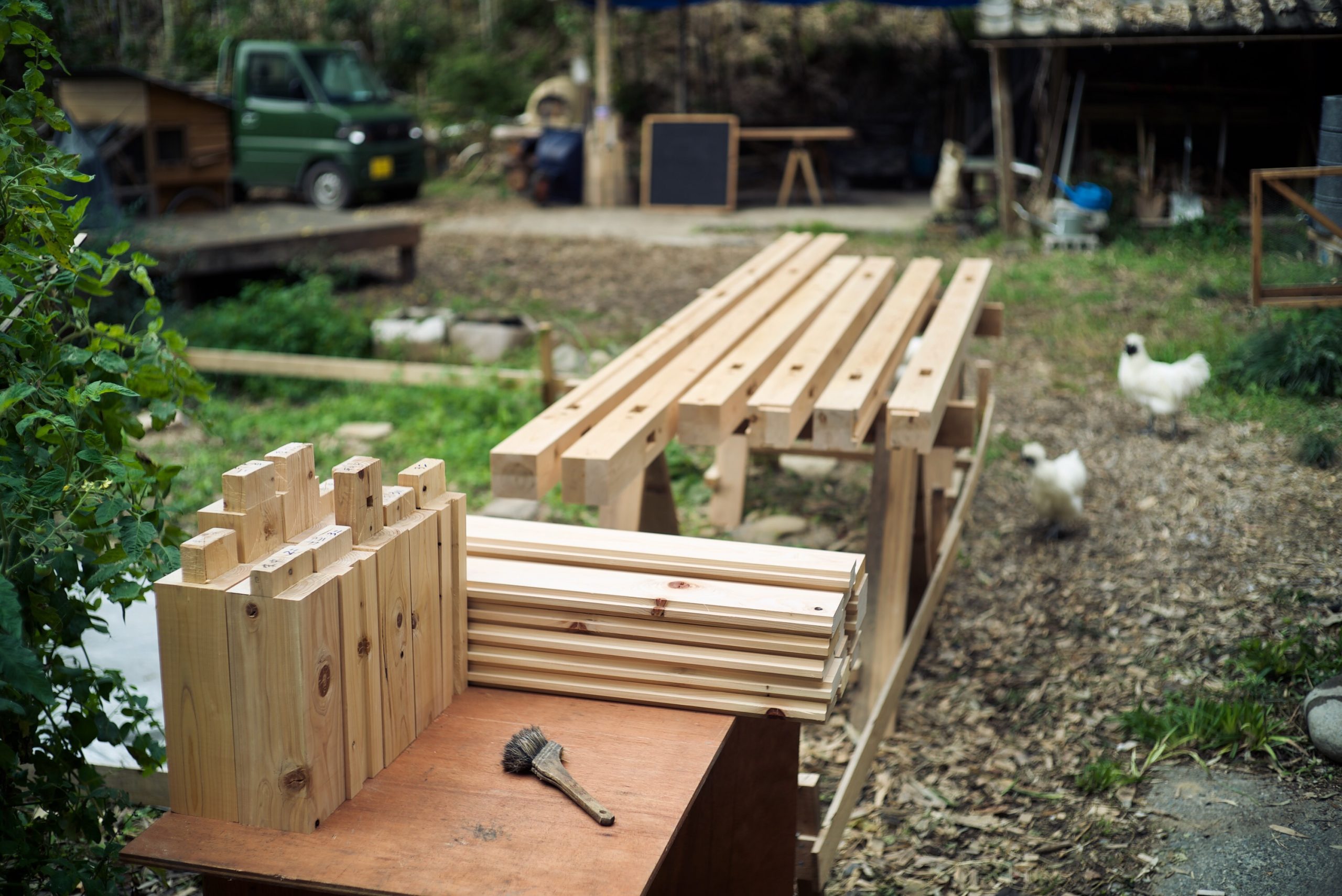
電力不足で作業が進まないのもあり、壁の刻みは置いといて柿渋を塗る事にした。塗布するのは地面から立ち上がっている柱と束に土間部分の壁材。
Preparing wall boards were slow due to lack of electricity. But there’s always something to prepare. This time we did a coating on pillars from the ground and wall boards for the dirt floor.
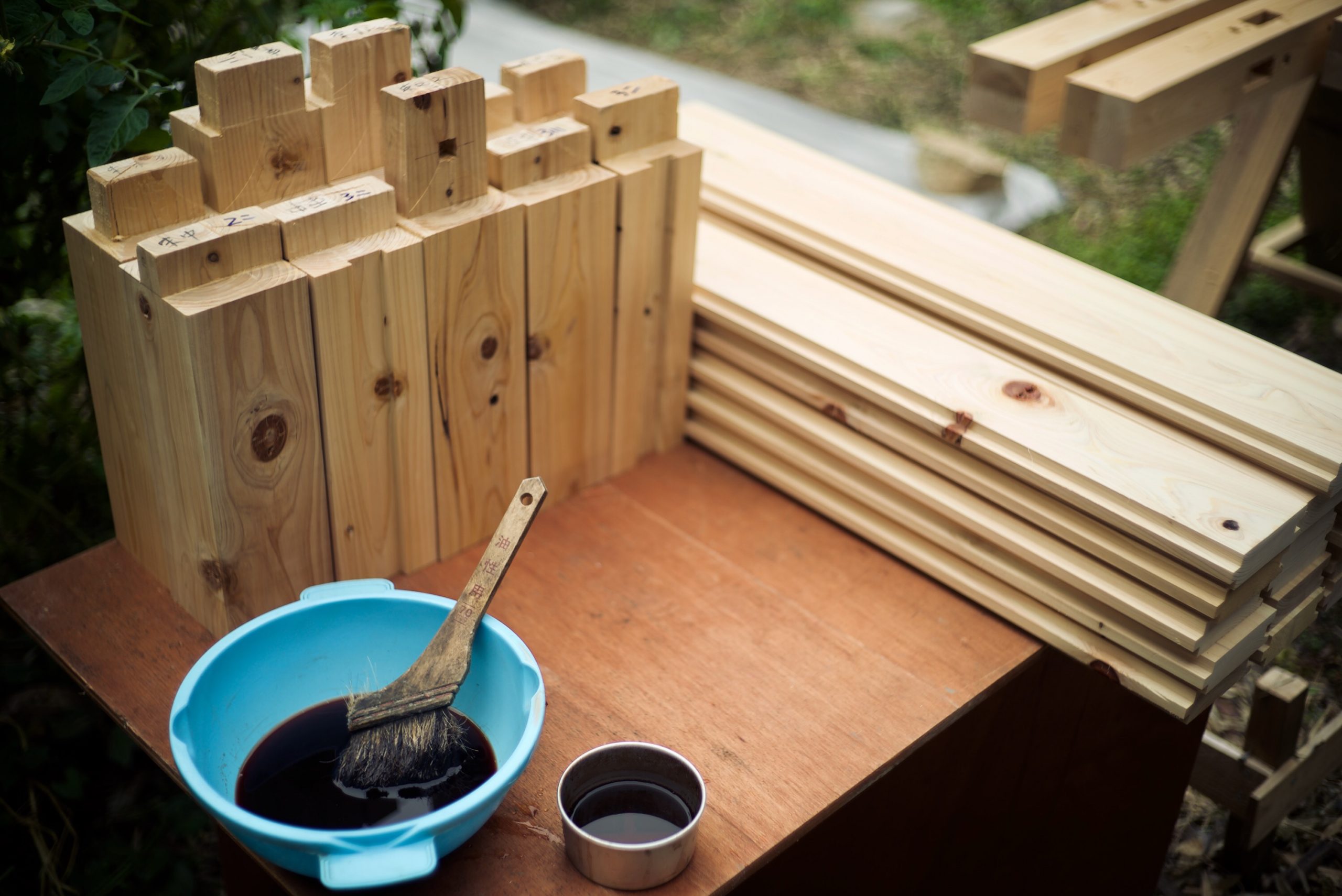
柿渋は購入したものを使用、後々自作してみたいものの一つである。柿渋は防水防腐材になる素晴らしい自然塗料、ただ塗布した表面は一時的な撥水はするものの時間んと共に水分が浸透してしまうので今回は防腐剤としての使用、防水面は蜜蝋でカバー!
We used Kakishibu, persimmon tannin paint for this. It’s a natural paint which you could make out of immature Kaki. Then put bee-wax for the second layer.
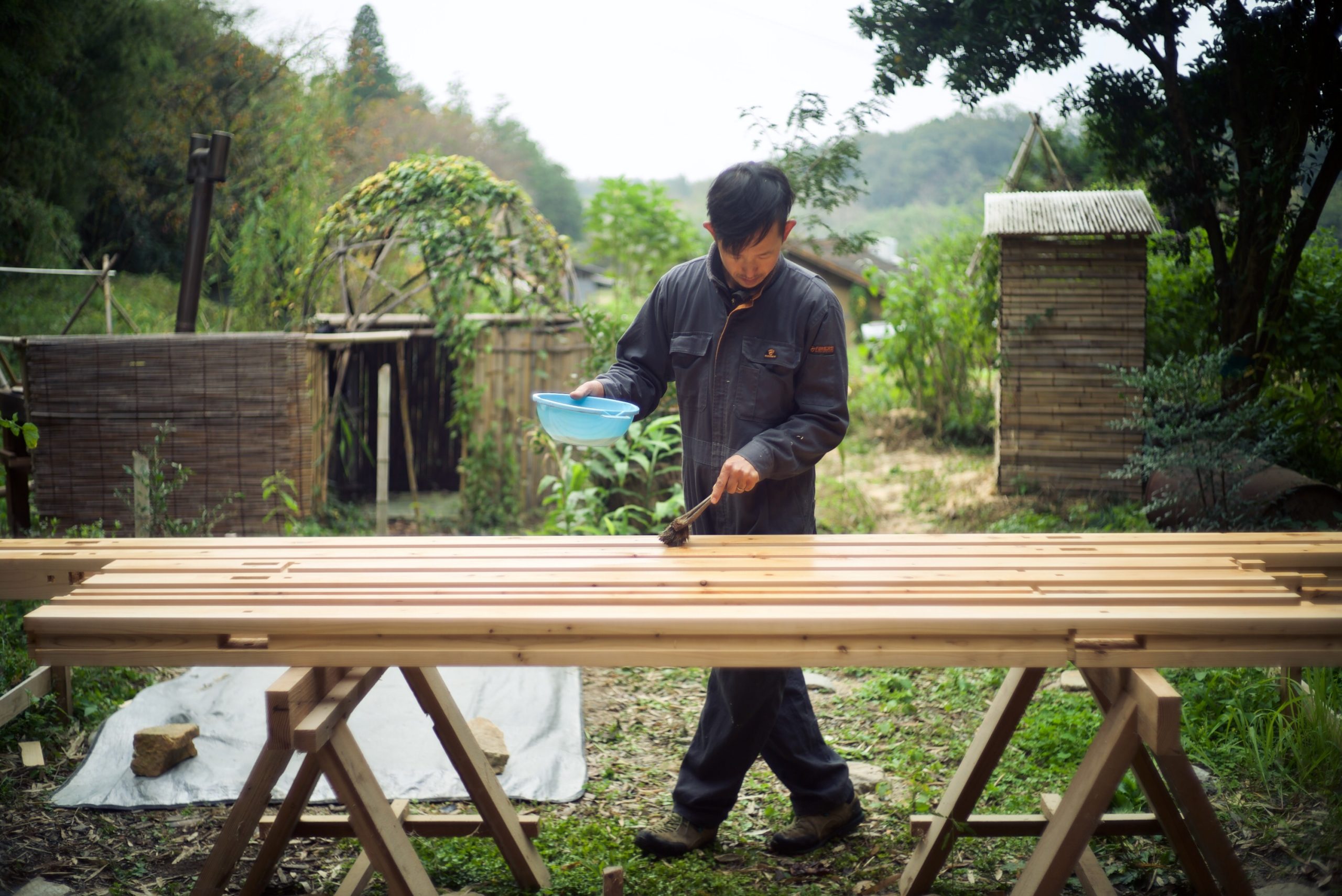
ムラにならないように水で二倍に薄めたものを二度に分けて塗布して二、三日日に当て発色させる。
Dilute with water and paint it two times. Let them soak the sun for a couple of days to get color.
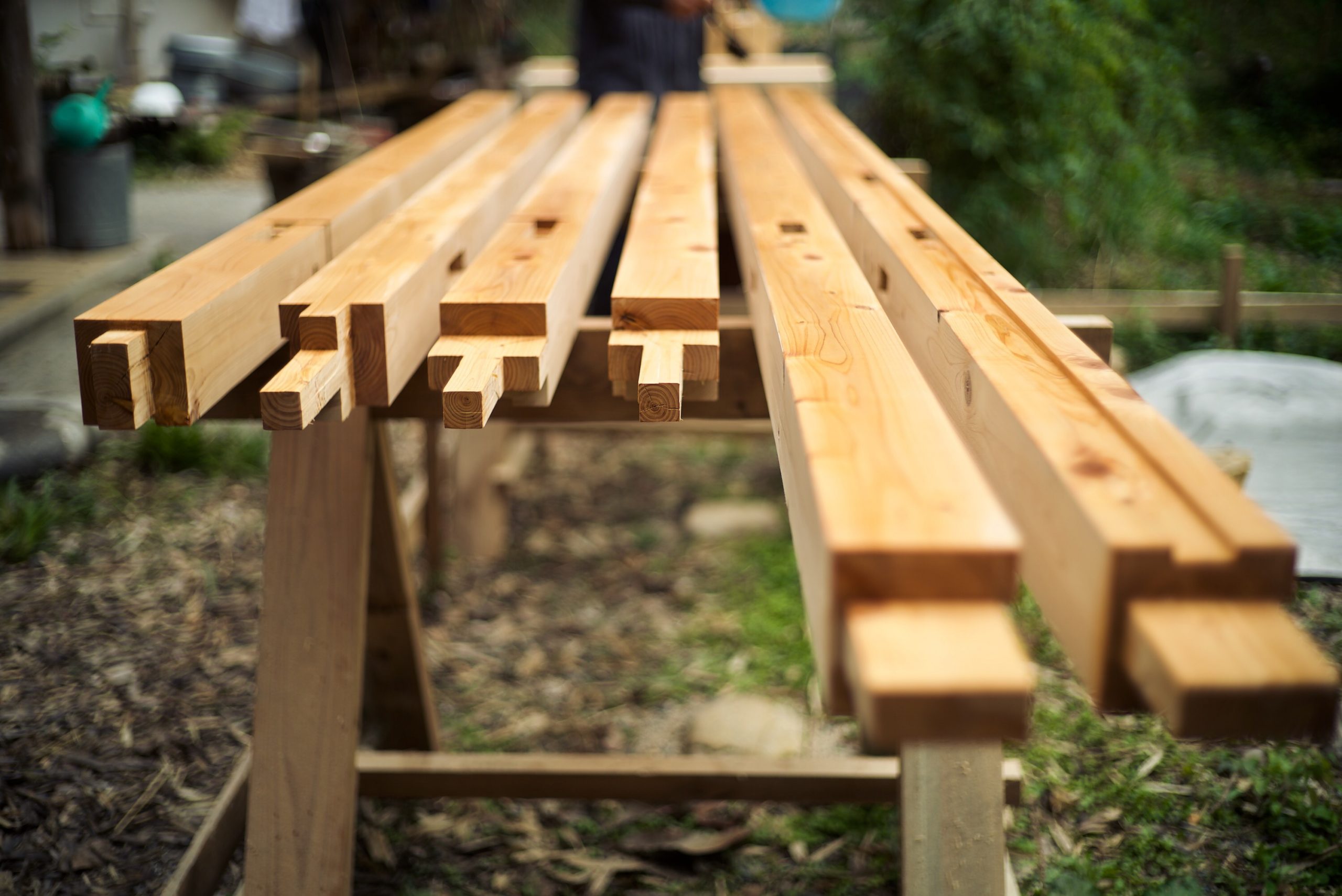
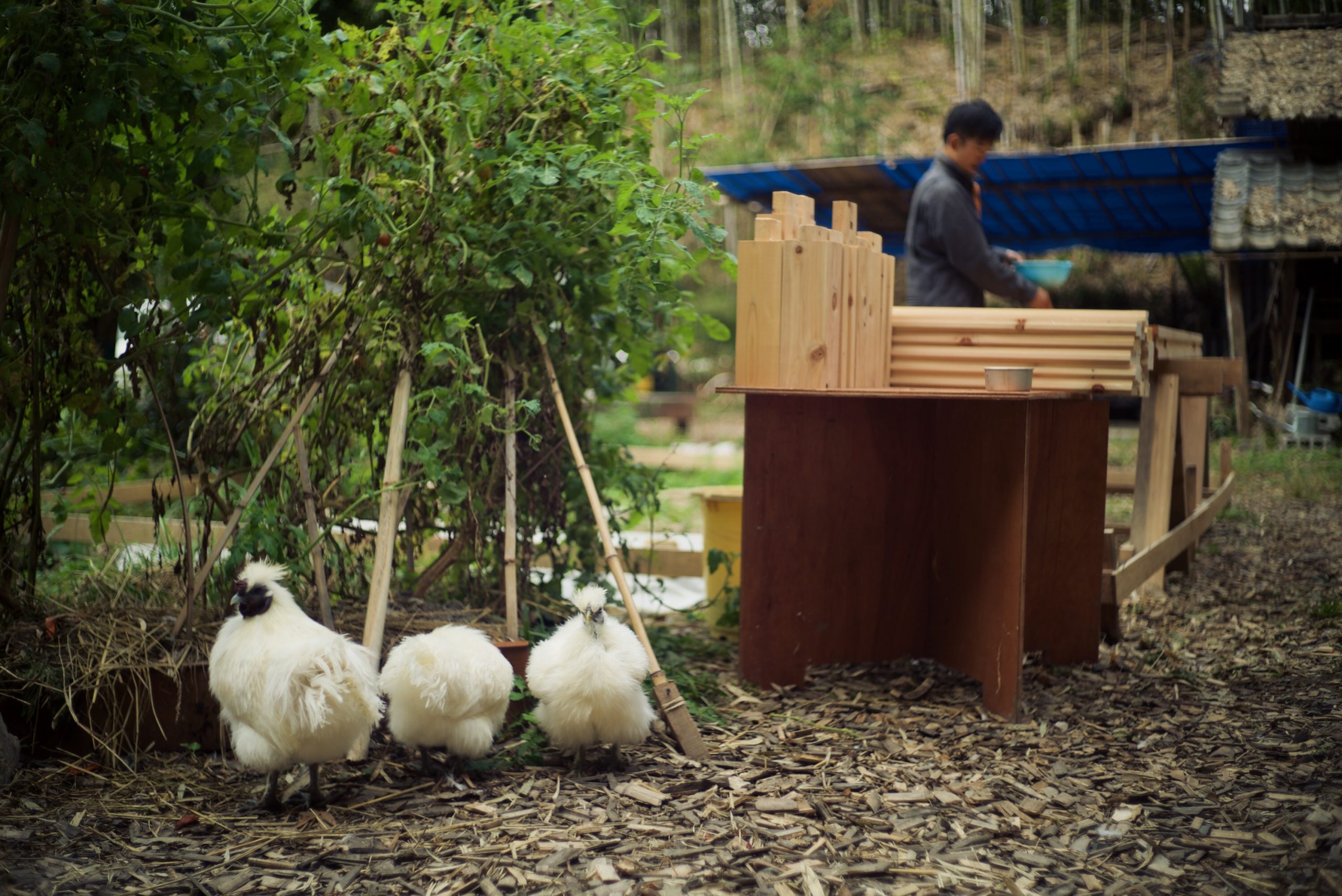
丸々フワフワの烏骨鶏達はもう立派な大人になっちゃった。
Our silkies are matured. Tell you the truth they got baby chicks before us.
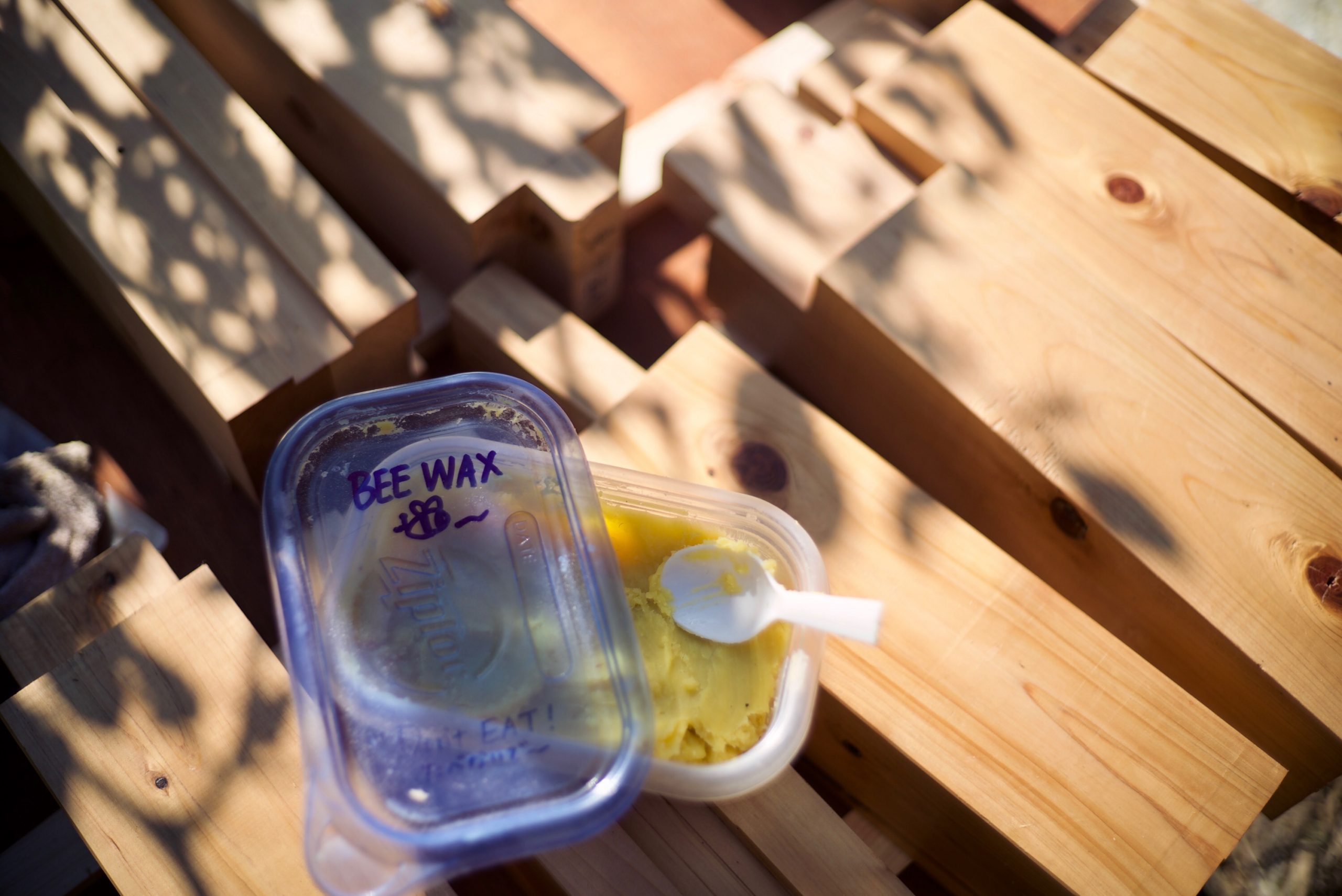
ワックスは渓がニュージーに居た時にマーケットで買った蜜蝋に亜麻仁油を混ぜて渓に作ってもらった。塗布した後はべっとりしてるけど次第に木に染み込んでいき同時に自分の手にも馴染む、そしていい香り~。
アドバイスしてもらってる大工の杉山さんからはキシラ(一般的な防腐剤)は絶対に塗れと言われた、自然素材の組み合わせで問題が出るのかでないのか、経過を見ていこうと思う。
次回は建前しまーす、いよいよHapi Hutが形になるよ~
I asked Kei to make the oil blend bee-wax with flaxseed oil and beeswax from New Zealand. Kei bought the beeswax at market after Te Araroa. You can feel a little sticky on the surface after putting it. Then it permeates into and leave a moist touch behind. It smells great and you get smooth skin as well!
Next is putting all the parts together, building “Hapi Hut” !

コメントを残す